What are the different shed bracing types?
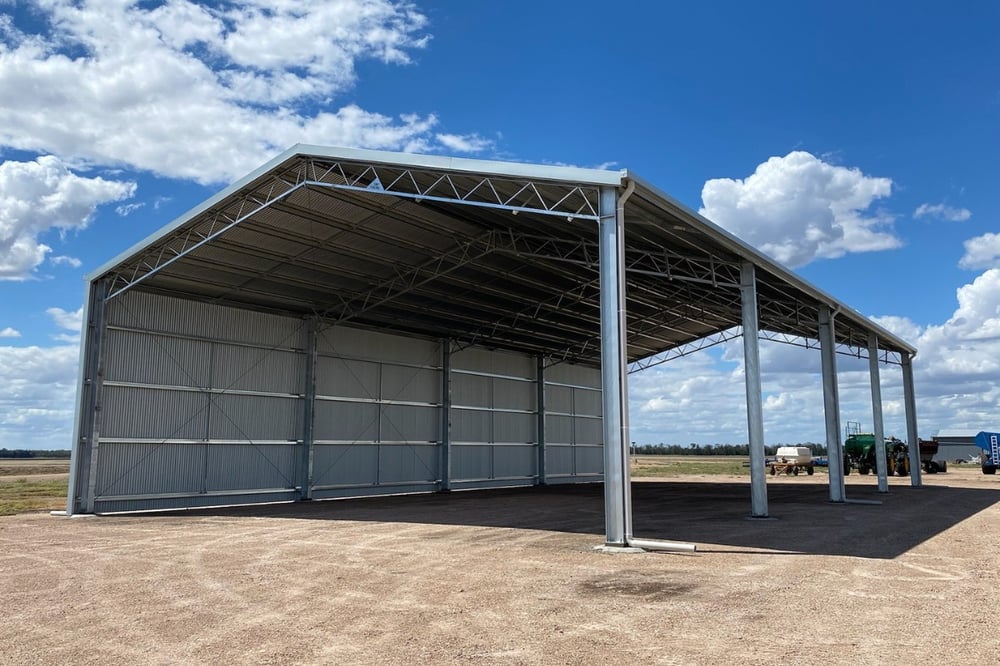
When building a shed, the right bracing provides stability and strength. When used correctly, bracing prevents the shed’s structure from problematic swaying, twisting, or collapsing. It also helps to distribute pressure evenly throughout the structure, ensuring it can stand the test of time.
Depending on the shed, several types of bracing can be used to achieve a reliable, safe, and compliant shed building. In this article, we outline the following:
- Types of shed bracing.
- When to incorporate structural bracing.
- Large shed structural engineering.
bracing types for large sheds
The right shed bracing depends on the size, location, building codes, and environmental conditions. Bracing enhances your shed's structural integrity, ability to withstand external forces, and safety of the occupants and assets inside. We recommend incorporating a combination of bracing solutions to maximise strength and capacity.
Use our free online Shed Builder to visualise your structure and ensure it’s built for strength, or download the ABC Sheds brochure for inspiration and specifications.
Below, we cover the various types of wall bracing and roof bracing. If you need to understand shed terminology, read the 'Shed Terminology Explained' article, which explains the most commonly used terminology in the shed industry.
Wall bracing
Wall bracing is used to stabilise the walls of the shed and prevent them from buckling or shifting.
Wind wall bracing
Standard wind wall bracing is also known as cross bracing, cross-over bracing, X bracing, or wind bracing. The cables are fitted with a turnbuckle, allowing easy tensioning and re-tensioning. This is particularly helpful for reactive soil types that cause movement after build completion.
Compared to more rigid bracing types, this option is safer and more cost-effective and enables faster roof erection. However, this bracing type requires an entire bay space to be effective and can clash with planned openings.
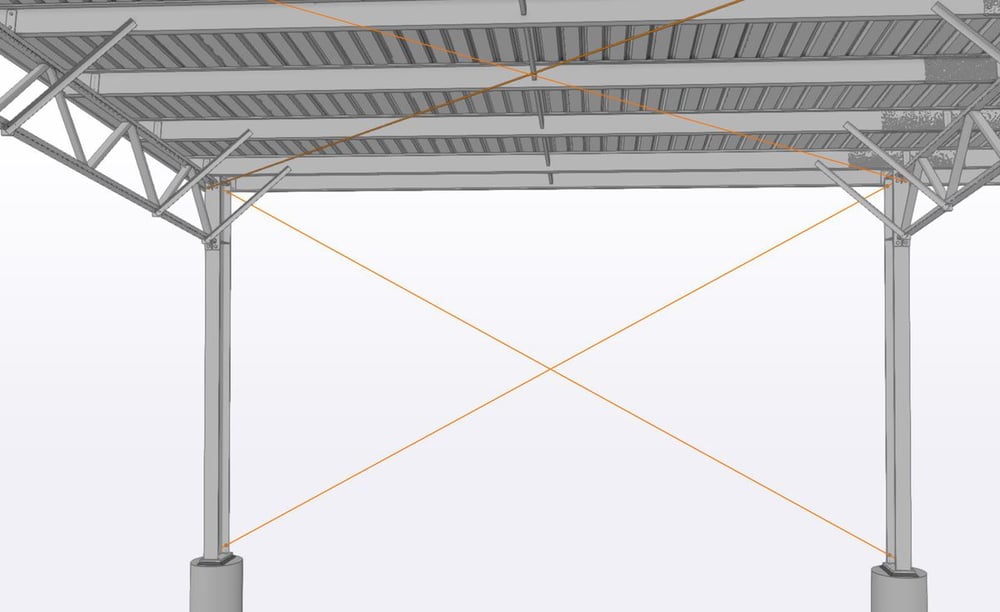
Heavy-duty bracing
Heavy-duty braces are commonly used for structures that require a gantry crane, have extreme eave heights, or are located in cyclone regions. The concept is similar to standard wind wall bracing, though it is designed for even higher strength.
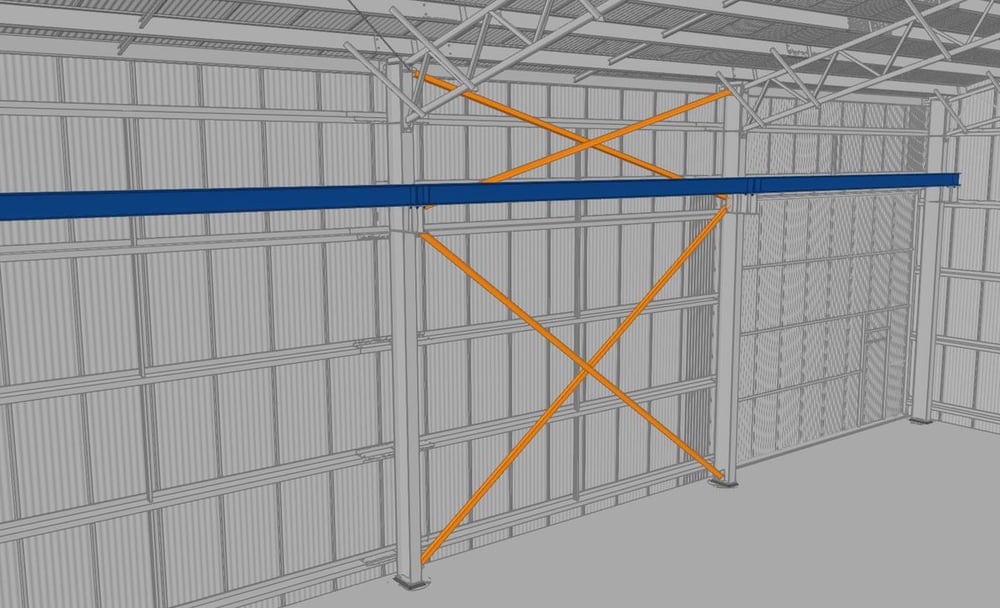
Embedded columns
Also known as cantilevered columns, this bracing type consists of vertical support columns set in the ground with concrete. This anchor creates a sturdy base for your shed that resists wind and seismic activity.
When standard bracing is not possible, embedded columns are a useful alternative. For example, in a roof-only yard cover, animals may injure themselves on exposed bracing, so the minimal design of embedded columns is preferable.
The main disadvantage of embedded columns is the slightly higher cost when compared to traditional cross-bracing methods. It is also more difficult to install because it requires propping and partial installation before the concrete pour.
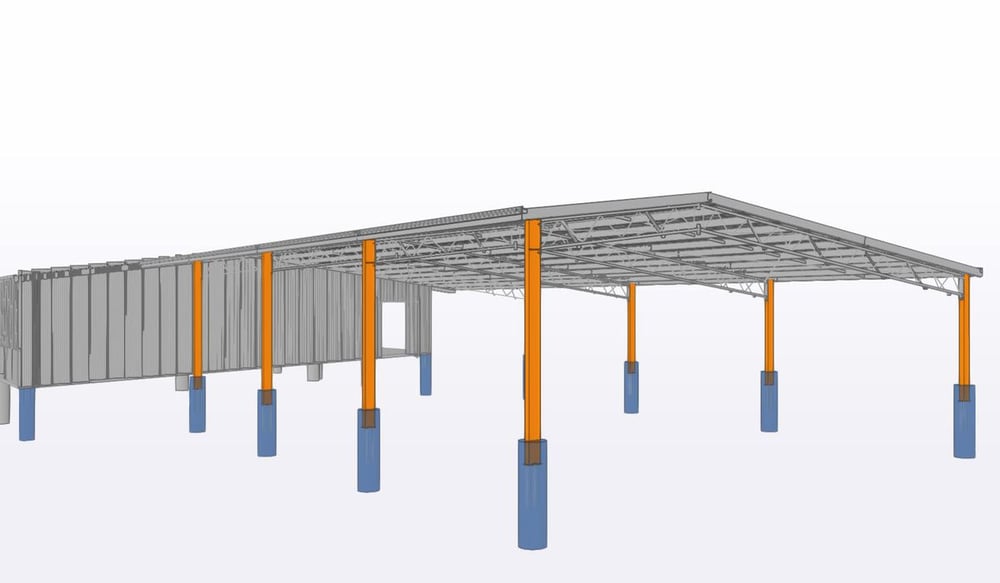
K-brace and strut brace
Strut braces are diagonal members, extending from a vertical post to another structural element, such as a beam or roof truss. K-braces also feature diagonal members, with a horizontal beam across the top to form the characteristic K shape. One key advantage of this is the flexibility for planned openings in the facade.
In both K-braces and strut braces, the diagonal members resist compressive and tensile forces, stabilising the structure against external loads. By connecting multiple points, they also minimise lateral sway. These braces can be incorporated in the top half of the wall height and, when bracing under gutters isn’t viable, can provide external bracing anchored to external pier footings.
The main disadvantage of strut and K-bracing is that they are rigid and heavy, making them difficult to install. The heavy steel can also be expensive, along with the potential requirement for more footings.
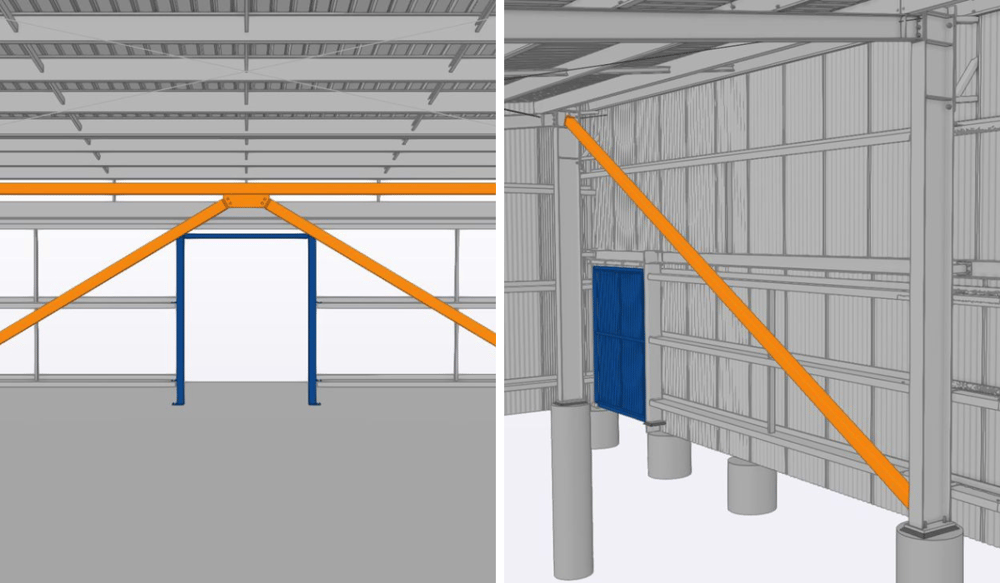
Roof bracing
Roof bracing ensures that the shed roof can withstand various loads, including snow, wind, and the weight of the roof itself. Effective bracing prevents the roof from sagging or collapsing under pressure. With structural steel sheds, roof bracing may include one or more of the following:- Wire roof bracing — Strong cables tied in a cross pattern, also known as cross bracing, cross-over bracing, ‘X’ bracing, or wind bracing.
- Compression purlins — Heavy purlins that run concentric to the cross bracing and double as a tie brace.
- Fly bracing — Strategically placed on every second purlin, running down to the bottom of the truss.
When to use bracing in your large shed
Wind region
In Australia, we have four key wind zones, based on wind speeds and the frequency of extreme weather events. Region A is considered normal, Region B is intermediate, Region C is cyclonic, and Region D is severe cyclonic. When consulting with you, we will confirm your wind region and the recommended bracing solutions.
For the more extreme locations, we also manufacture cyclone-rated sheds with fully fabricated steel frames. These frames can withstand the worst Australian storms, standing strong for decades to come.
Clearspan sheds
With a wide span or clear span, there are no vertical columns inside the shed. This maximises internal space but means the roof and walls must be fully supported by the shed’s framing. If you are interested in a wide span, additional bracing will help to distribute the load evenly and reinforce the shed structure.
Large shed structural engineering
At ABC Sheds, we pride ourselves on a high standard of strength, durability, and design customisation. When it comes to large sheds, we combine a range of engineering solutions to bring your vision to life.
Structural steel
Structural steel is incredibly strong, measuring between 5mm to 20mm thick. It can support more weight than roll-formed steel and can span over 60 metres with no centre supports. Structural steel is also far more weather-resistant, robust, and customisable. We’ll cut and weld the steel to your requirements, opening up endless options for shed design and size.
Portal frames
A portal frame features two vertical columns joined at the top by rafters. The rafters are bolted together at the haunch joints and apex joints, providing a strong framework for the purlins, girts, and cladding to be mounted.
Large clearspans
One of the main benefits of our portal frames is the large open space inside your shed. With the right engineering and materials, your shed frame can be fully self-supporting, with no need for additional support. This will maximise the usable internal space for storage and machinery.
Pre-welded components
Our structural steel elements are prefabricated into sections before they are delivered to your shed site. These components are welded and bolted together, making the on-site assembly quick and easy.
Custom shed design
Your shed will be tailored to your needs, featuring everything you need to maximise efficiency. We can incorporate an endless array of features, including windows, doors, mezzanine floors, ventilation, and more. To see some of what can be achieved, try out our shed builder tool!
Cyclone-rated sheds
At ABC Sheds, we manufacture cyclone-rated sheds with fully fabricated steel frames. These frames can withstand the worst Australian storms, standing strong for decades to come. If you live in Wind Regions B, C, or D, explore our cyclone-rated range!Ready to Design a Strong, Compliant Shed? Here’s Your Next Step
When it comes to building a large shed, the right bracing can make all the difference between a structure that stands strong for decades and one that fails under stress. Now that you understand which types of bracing best suit your shed and wind region, it’s time to take the next step, which is designing your structure for maximum safety and performance.
At ABC Sheds, we’ll guide you through the entire process, from design to fabrication, ensuring your shed is compliant, durable, and built to last.
Use our free Shed Builder tool to visualise your design, or download the ABC Sheds brochure to explore your options today.
-1.png?width=3641&height=660&name=abcshedstransparent2%20(1)-1.png)
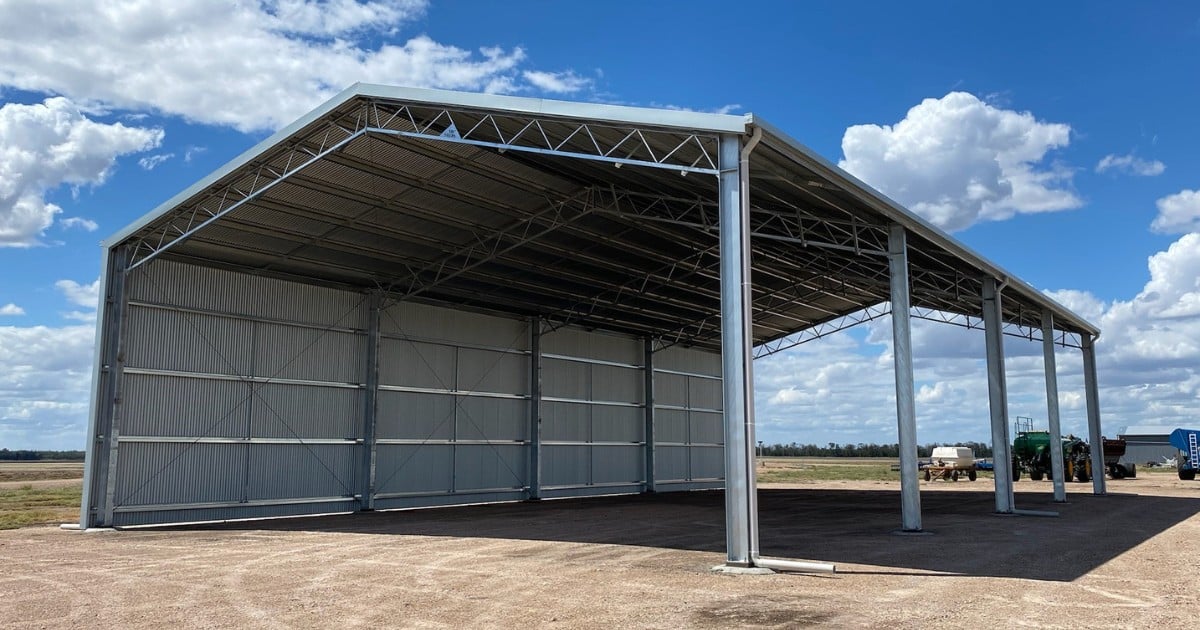






.jpg?width=352&name=ABC%20Sheds%20-%20Blog%20images%20%20(2).jpg)
